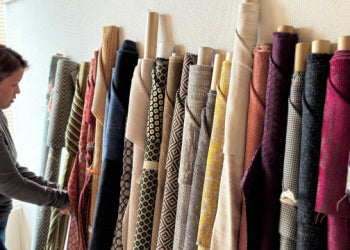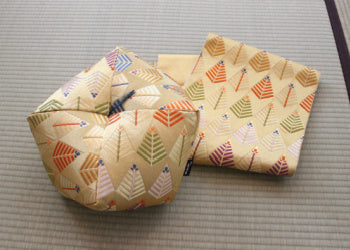Do you know anything about the zabuton?
Zabuton are traditional Japanese cushions with nearly 1000 years of history. Originally, zabuton indicated high status, and were only used by people such as the emperor and members of the imperial court, or most revered of Buddhist monks. Now, zabuton are part of daily life and are central to Japanese omotenashi culture of hospitality.
“Omotenashi”: The Spirit of Kyoto hospitarity
Three Characteristics of Kyoto Zabuton
 |
 |
 |
|
1.”Sampo-toji”
|
2.”Sumi-fusa”
|
3.”Kamaboko-gata” The bottom of a zabuton is flat, |


